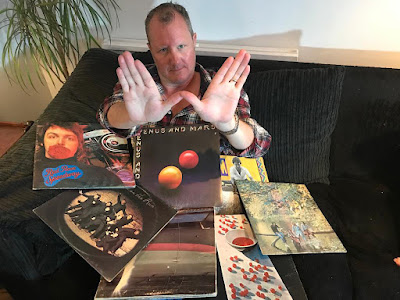It's a randomised controlled trial in which 357 smokers aged 21 to 65 years from San Diego County,
California, who were not actively
planning to quit smoking, were sent their usual brand of cigarettes for a month and were then split into three groups for the next three months when they were sent either standard packs, packs with graphic warnings or plain packs (i.e. with no brand imagery but also no graphic warnings). Their smoking and other behaviour was monitored daily.
In practice, both the graphic warning packs and the plain packs were plain. All corporate colours and logos were removed from both (see image at the bottom of this blog post). In effect, it is an RCT about plain packs as we know them.
After four months - with 18,987 cigarette packs sent out and used - it seems that the people who used the graphic warning packs were more likely to conceal them. This what the researchers focus on in the text of the study:
Daily querying showed that the inclusion of GWLs on cigarette
packs increased the percentage of smokers who hid their packs at least
some of the time from 41.3% (95% CI, 39.6%-43.0%) during the run-in
period to 57.1% (95% CI, 55.9%-58.1%) by the end of the intervention
period.
Crucially, however, the study also found that...
Neither smoking prevalence nor consumption differed by group at any point in the study.
This was true of the smokers who had the plain packs as well as the smokers with the graphic warning packs. There was no difference in smoking prevalence or cigarette consumption compared to the group that kept using their normal packs.
It is worth remembering that when the campaign for plain packaging in the UK was reaching its crescendo, a study from Australia got a lot of attention because it appeared to show that some smokers were concealing their cigarettes when they were in cafés and bars after the policy was introduced (by putting them under their wallets or phones, for instance). It was cited as evidence that plain packaging "can deter the take-up of smoking" and "would save lives".
Throughout the agitation for plain packaging, small behavioural or attitudinal shifts from smokers confronted with new packs were taken as a proxy for reduced smoking prevalence or reduced cigarette consumption. The same kind of evidence had been used to campaign for graphic warnings themselves.
But there has never been any evidence that these policies have any real effect on smoking behaviour, cigarette consumption, smoking cessation or smoking initiation.
This is the third randomised controlled trial showing that they don't make any difference where it counts. I wrote about the second one last year. The first one was published in 2015 and found "no evidence that pack type had an effect on either of the primary measures" [number of cigarettes smoked and amount of smoke inhaled] but it did find that smokers "rated the experience of using the pack more negatively .. rated the pack attributes more negatively .. and rated the health
warning as more impactful".
Dozens of studies have found that smokers prefer standard packs to plain packs and written warnings to graphic warrnings. Of course they do. The 'plain' packs and graphic 'warnings' are deliberately ugly. Anti-smoking campaigners and gullible politicians assumed that this would lead to behavioural change.
Sceptics said that it wouldn't because smokers buy cigarettes for the cigarettes, not the pack. And we were right again, weren't we?
 |
Click to enlarge
|



.jpg)




